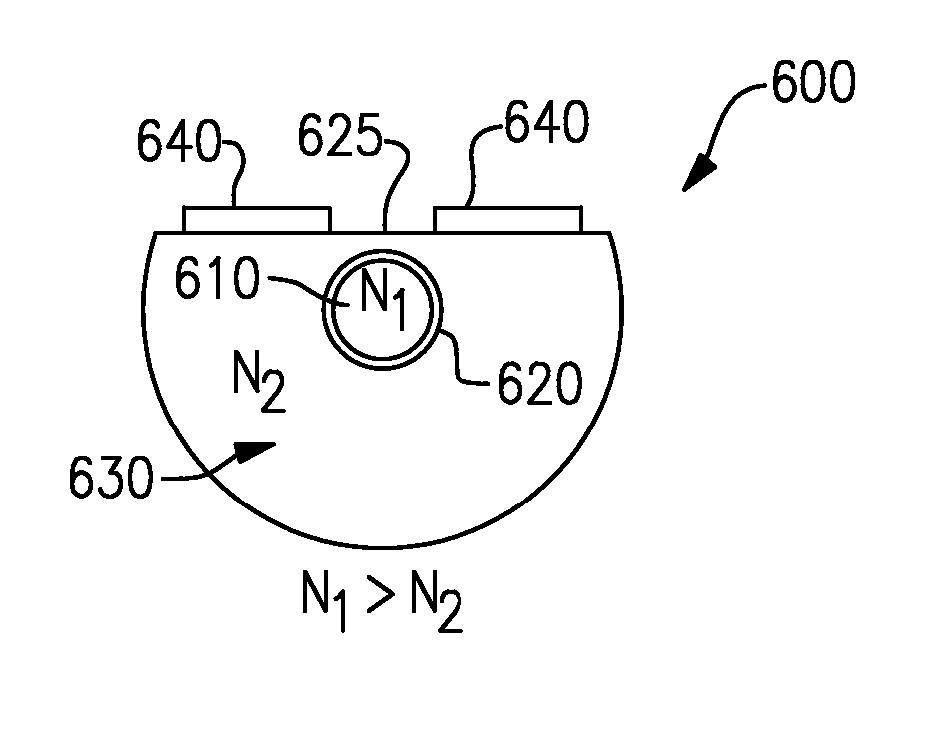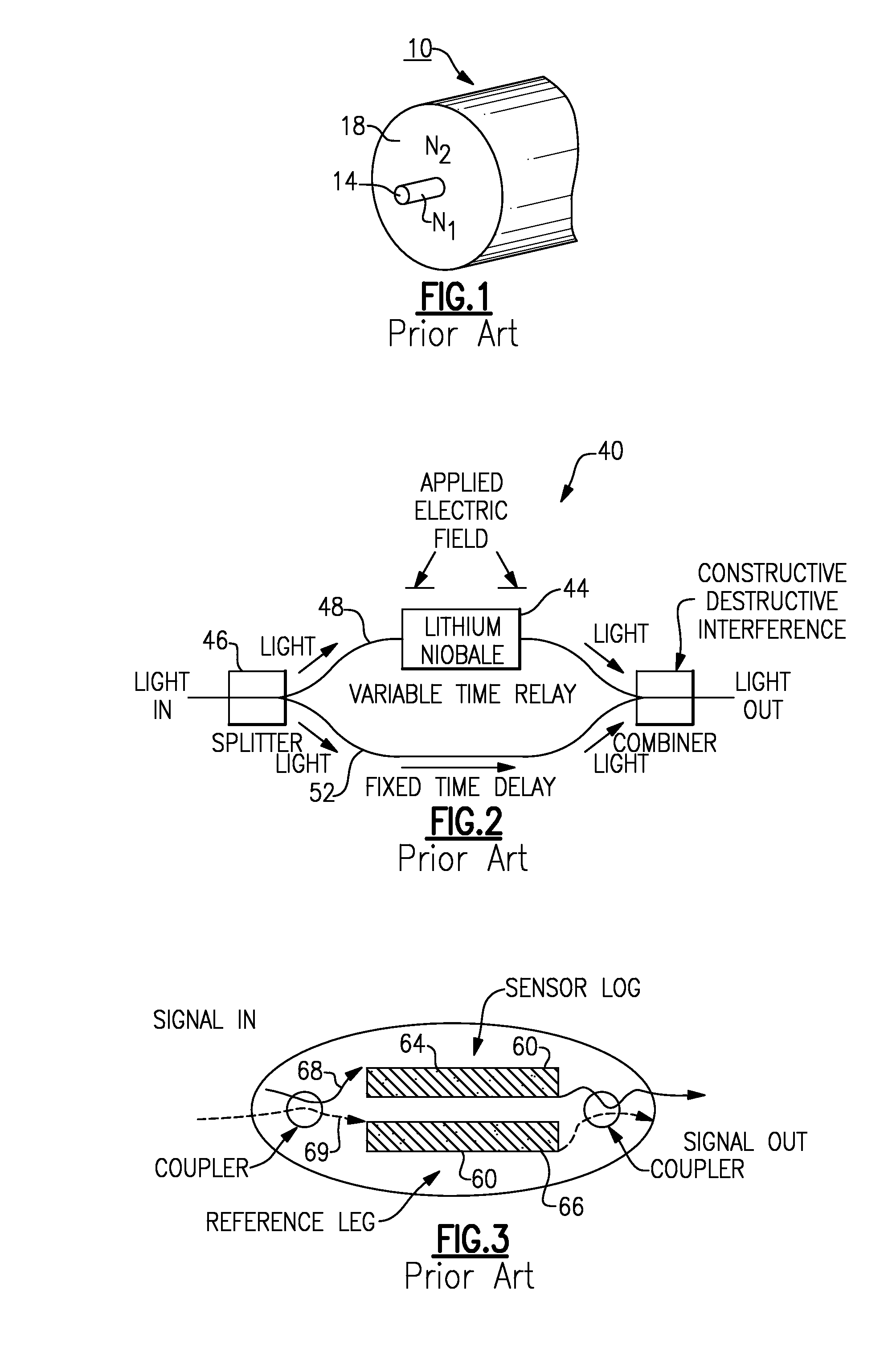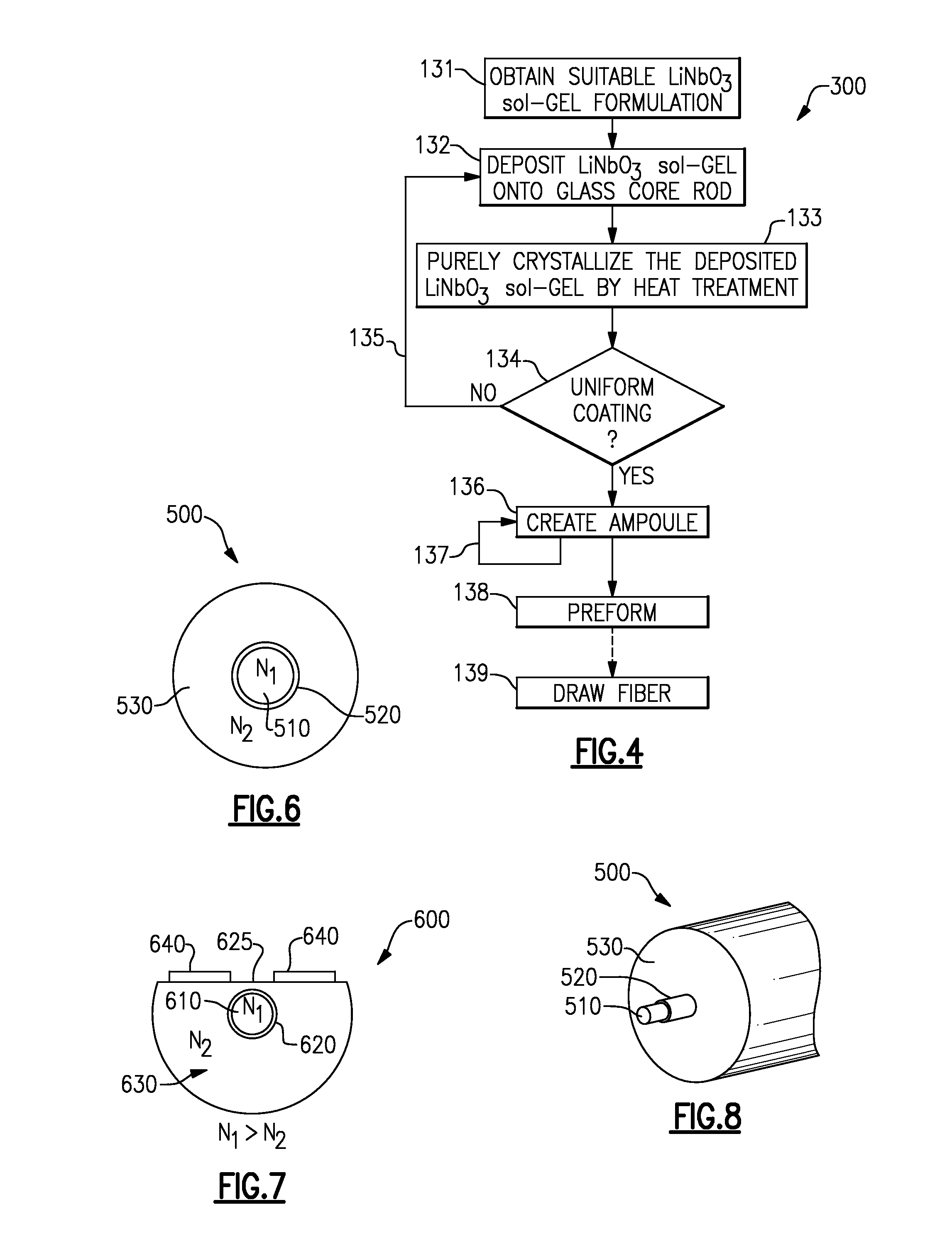Lithium niobate coated optical fiber apparatus and method
- Summary
- Abstract
- Description
- Claims
- Application Information
AI Technical Summary
Benefits of technology
Problems solved by technology
Method used
Image
Examples
Embodiment Construction
[0035] Referring now to the drawings, wherein like reference numerals refer to like parts throughout, there is seen in FIG. 6 a drawn cylindrical optical fiber 500 according to an embodiment of the present invention. Fiber 500 includes a glass central core 510 having an index of refraction n1, a glass cladding 530 having an index of refraction n2, where n1 is greater than n2, and a uniform, thin film layer of lithium niobate (LiNbO3) 520 disposed between the core 510 and cladding 530. Thin film layer 520 is a sol-gel material formed from lithium niobate (LiNbO3), a crystal with excellent electro-optic and acousto-optic properties. The index of refraction (n3) of thin film LiNbO3 changes slightly and in proportion with the application of an electric field (electro-optic effect) or the application of stress (piezoelectric effect).
[0036] There is seen in FIG. 4, a process 300 for making an optical fiber preform that is used to form a lithium niobate optical fiber, such as that shown i...
PUM
 Login to View More
Login to View More Abstract
Description
Claims
Application Information
 Login to View More
Login to View More - R&D
- Intellectual Property
- Life Sciences
- Materials
- Tech Scout
- Unparalleled Data Quality
- Higher Quality Content
- 60% Fewer Hallucinations
Browse by: Latest US Patents, China's latest patents, Technical Efficacy Thesaurus, Application Domain, Technology Topic, Popular Technical Reports.
© 2025 PatSnap. All rights reserved.Legal|Privacy policy|Modern Slavery Act Transparency Statement|Sitemap|About US| Contact US: help@patsnap.com



